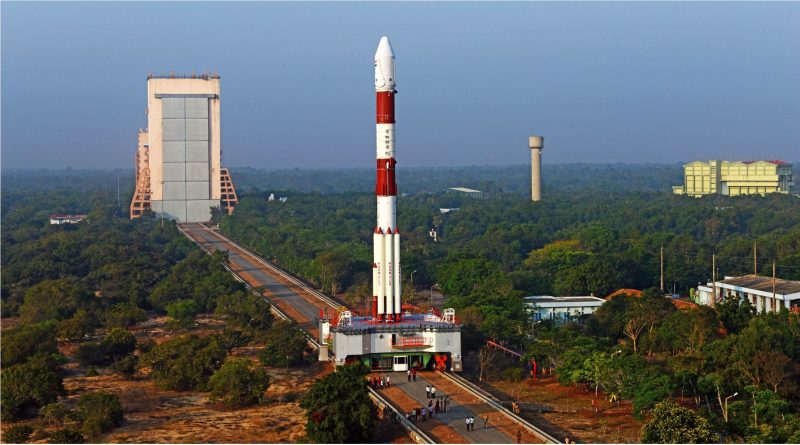Indian PSLV Rocket counts down to sixth IRNSS Navigation Satellite Launch
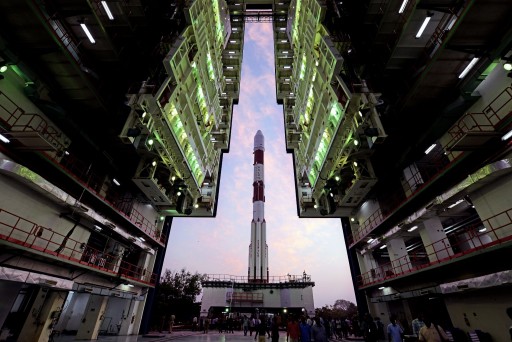
India’s Polar Satellite Launch Vehicle is set for its second launch of the year on Thursday in the continued deployment of the Indian Regional Navigation Satellite System. A rapid deployment sequence in the opening months of 2016 has been outlined by the Indian Space Research Organization to deliver the last three IRNSS-1 satellites to orbit and achieve a full operational capability of the system.
PSLV, utilizing its most powerful XL configuration, is set for blastoff from the Satish Dhawan Space Center at 10:30 UTC and will be tasked with a flight of 20 minutes to deliver the IRNSS-1F satellite to a sub-GTO orbit from where the spacecraft will climb into Geostationary Orbit. IRNSS-1F will join the five satellites launched in the last two and a half years with the final IRNSS launch currently set for April to finish a rapid deployment.
The Indian Regional Navigation Satellite System will reach is fully operational capability later this year after the seventh satellite enters operation. IRNSS has been designed to deliver navigation services to the Indian territory and surrounding areas.
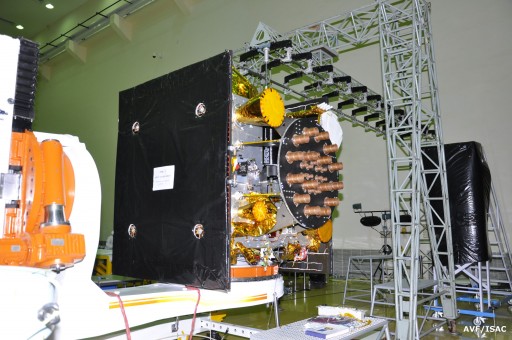
Unlike other satellite navigation systems such as the American GPS, the Russian Glonass, Europe’s Galileo and China’s Beidou that all deliver global coverage, IRNSS only provides regional services. Designed as a regional system, IRNSS does not require as many satellites as these other systems in an overall simplification of operations and a cost-saving measure.
The development of IRNSS has been initiated to provide India with independent access to navigation data, no longer relying on foreign programs. The operational satellite constellation is comprised of seven satellites – four in inclined Geosynchronous Orbit and three in Geostationary Orbit over the equator and constantly visible from India.
IRNSS is compatible with the U.S. Global Positioning System and Europe’s Galileo constellation using navigation signals in S-Band and the L5 Band. When fully deployed, IRNSS will cover the Indian territory with high-accuracy services extending about 1,500 Kilometers beyond the country’s borders.
>>IRNSS Satellite & Constellation Overview
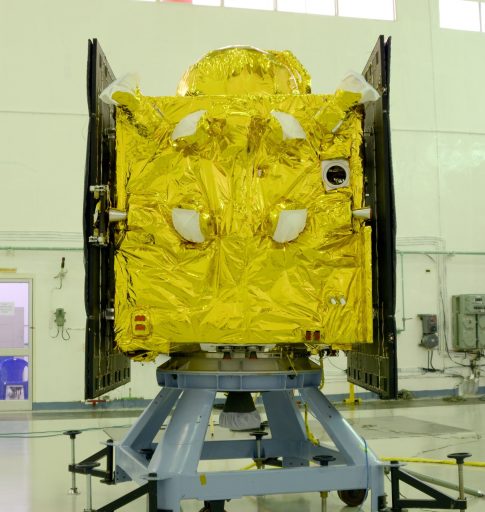
IRNSS-1F, like its identical twins already in orbit, weighs in at 1,425 Kilograms, including 800kg of propellants. The heart of the satellite is a highly accurate Rubidium atomic clock to provide the precise timing solutions needed in the generation of navigation signals. The spacecraft, as part of IRNSS, will deliver a Standard Positioning Service that is open to all users as well as Restrictive Service with high accuracy that is only available to authorized users. IRNSS will reach an accuracy of 10 to 20 meters.
IRNSS-1F will take a slot in Geostationary Orbit at 32.5 degrees East, the most westerly slot in the constellation located over the African continent.
Preparations for this mission began immediately after the IRNSS-1E satellite left the launch pad on January 20 to keep to a tight schedule lined up for the last IRNSS deployments. At the Vehicle Assembly Building, the four-stage PSLV rocket was assembled in January and February.
PSLV is comprised of solid- and liquid-fueled rocket stages, leveraging the raw power of solid rockets and the precision and maneuverability of liquid-fueled engines. The integration of the launch vehicle started with the assembly of the large first stage, one of the largest solid rocket motors ever flown. It measures 20.3 meters in length, 2.8 meters in diameter and weighs 168,200 Kilograms, consisting of several segments that are stacked atop the launch table. Once the first stage was assembled, the six Solid Rocket Boosters were attached to the vehicle, each 13.5 meters long and one meter in diameter with a mass of 14 metric tons.
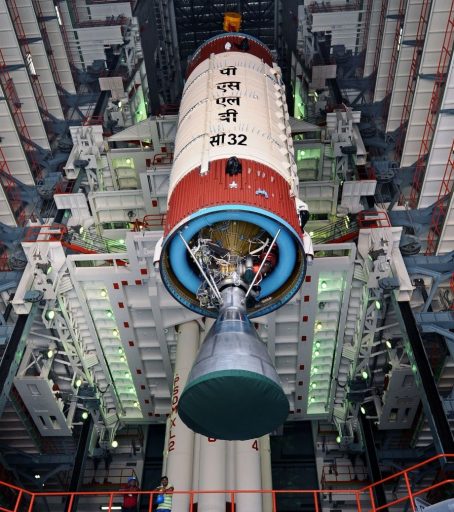
Next was the installation of the second stage which, unlike the boosters and core stage, uses liquid propellants, being 12.8 meters long and 2.8 meters in diameter, sporting a single Vikas engine. Stacked atop the second stage, PS3 is again solid-fueled with a diameter of 2.02 meters and a length of 3.54 meters, weighing around 7,800 Kilograms.
Sitting atop the stack is the liquid-fueled fourth stage, 2.6 meters long and powered by a pair of L-2-5 engines that will be tasked with giving the satellite its final boost into orbit.
When PSLV was assembled, an extensive set of checkout operations began to verify all subsystems were functional and all communication lines were up an running. IRNSS-1F was installed atop the fourth stage and encapsulated in the protective payload fairing, also completing a last round of systems checks.
On Monday, the Mission Readiness Review was held and the Launch Authorization Board confirmed the readiness of all systems for Thursday’s mission. Cleared for countdown operations, PSLV headed into a 54-hour and 30-minute countdown sequence on Tuesday, starting with the rollout of the 45-meter tall rocket to its launch pad.
Countdown & Launch Overview
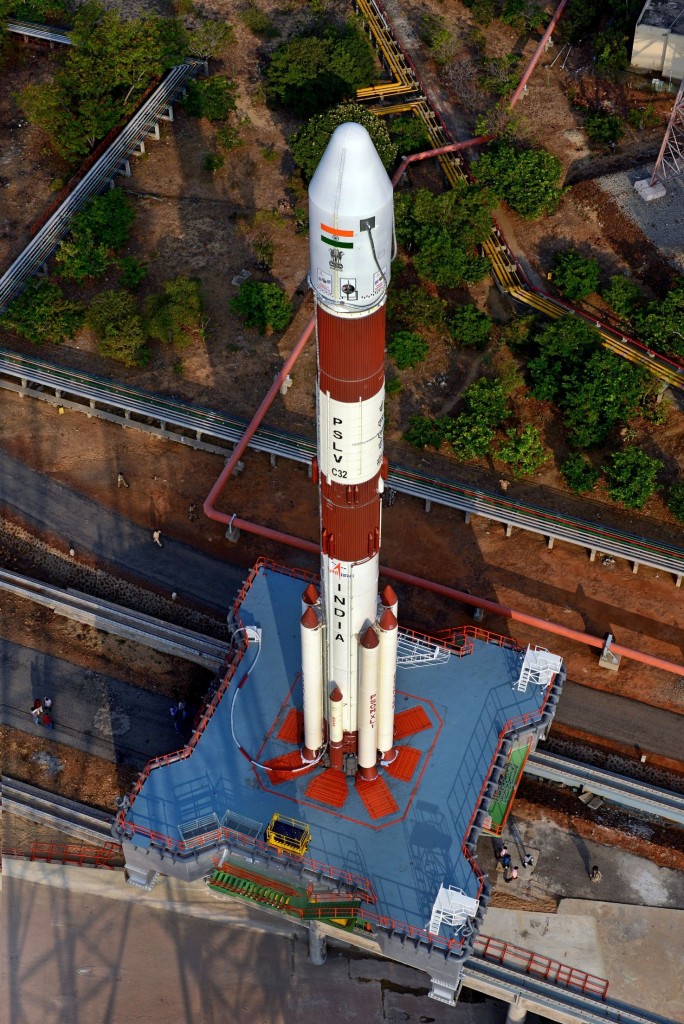
Countdown operations started at 4:00 UTC on Tuesday marking the start of a busy sequence that is filled with a number of operations to configure the rocket for flight. The lengthy countdown procedure includes propellant loading on the liquid-fueled stages and extensive checkouts of the rocket and spacecraft as well as preparations of India’s Ground Network of Tracking Stations needed for the flight and the initial operations of the spacecraft once in orbit.
Beginning countdown operations, teams started the hazardous process of loading the fourth stage with Monomethylhydrazine fuel which was completed within about six hours allowing teams to transition to oxidizer loading on the fourth stage that was filled with MON-3 (Mixed Oxides of Nitrogen) in the evening hours. The next tanks to be filled are the Roll Control Thruster tanks on the first stage that also receive MMH and MON-3 propellants. On Wednesday, the second stage will receive its propellant load – 40,700 Kilograms of Unsymmetrical Dimethylhydrazine and Nitrogen Tetroxide.
On Thursday, over the final hours of the countdown, teams perform hands-on work to close out the launch vehicle and launch pad facilities while the launch team monitors all systems of the launcher and the spacecraft, putting the vehicle through a last set of electrical, communications and control systems checks before pressing into the final countdown sequence. Also, the Mobile Service Structure will be rolled back to its launch position.
Teams will evacuate the launch area for the final countdown operation that includes a set of testing operations on the electrical and flight control system of the PSLV that also receives its software for the 20-minute ascent mission. Over the final minutes of the countdown, the launcher pressurizes its propellant tanks for flight, transitions to internal power and enables its flight control system in launch mode for PS1 ignition at T-0.
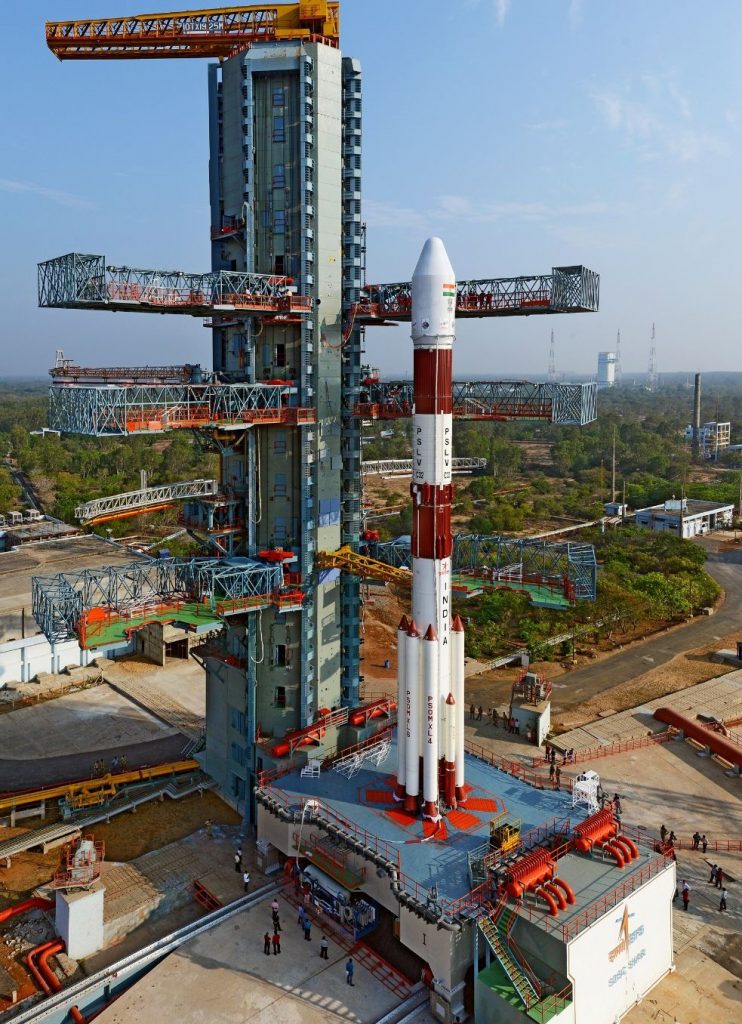
When clocks hit zero, the PS1 stage will fire its ignition system followed by ignition commands issued to two pairs of Solid Rocket Boosters at T+0.42 and T+0.62 seconds, creating a total thrust of 700,600 Kilogram-force. Jumping off its launch pad, PSLV will climb vertically for a short moment before pitching over to start flying south-east across the Indian Ocean, aligning itself with its planned ascent trajectory headed for a sub-GTO type orbit.
The remaining two Solid Rocket Boosters begin firing at T+25 seconds when PSLV will be 2.7 Kilometers in altitude, increasing the total thrust of the vehicle to 803 metric tons, further accelerating the launcher. Each of the boosters burns for 49.5 seconds, but to ensure a clean separation and off-shore impact, PSLV will hold the ground-lit boosters until T+1 minute and ten seconds when they will be separated in pairs, 0.2 seconds apart at an altitude of 24 Kilometers. The air-lit boosters will tail-off for separation one minute and 32 seconds into the flight.
The massive first stage will continue firing, delivering 496 metric tons of thrust as it burns through 138,000 Kilograms of solid propellant in just 105 seconds, lofting the vehicle to an altitude of 56 Kilometers and a speed of 2.4km/s. Separation of the first stage is expected one minute and 49 seconds into the flight with second stage ignition an instant later. The Vikas 4 engine of the second stage will soar up to a thrust of 81,500 Kilogram-force for a burn of just over 2.5 minutes. Starting the second stage burn, the vehicle will transition from a pre-determined attitude profile flown during PS1 to Closed Loop Control to dynamically adjust its flight profile based on measured navigation data in order to meet its cutoff targets.
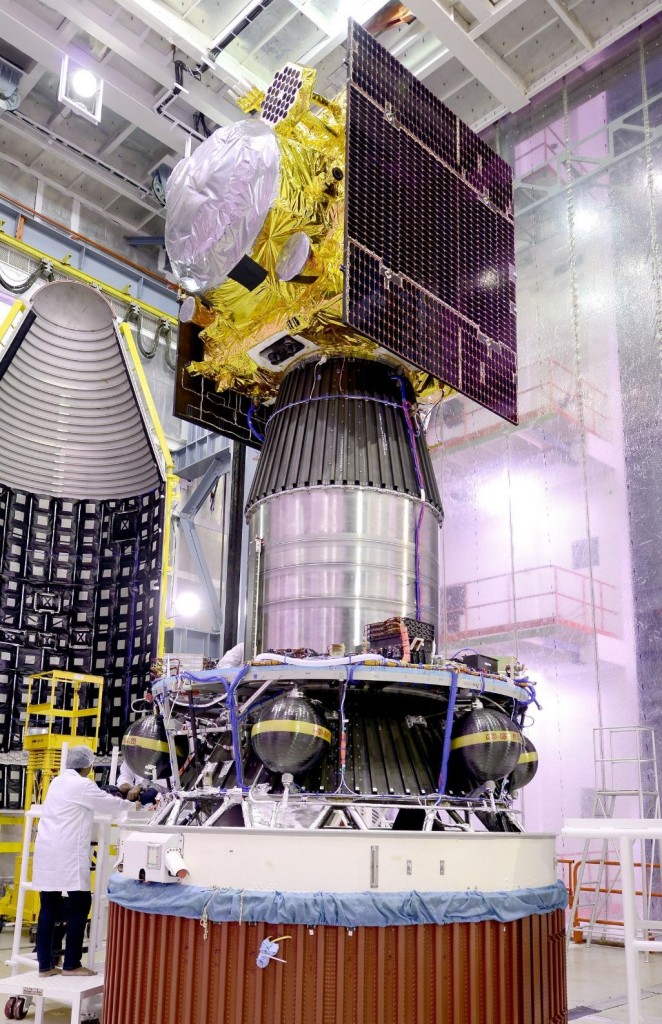
At T+3 minutes and 15 seconds, the vehicle will have reached an altitude of 113 Kilometers, making it safe to separate the protective payload fairing since aerodynamic forces no longer present a danger to the satellite at that altitude. The second stage will conclude its burn and separate at T+4:22, reaching an altitude of 135 Kilometers and a speed of 5.37km/s.
Third stage ignition occurs one second after staging, starting a burn of 113 seconds during which the stage will deliver 24,900 Kilogram-force of thrust. After burnout of the third stage, PSLV will keep holding onto the stage for the nominal Stage 3-4 coast phase that is designed to allow the stack to gain altitude ahead of the fourth stage burn. It also allows the third stage to tail off any residual thrust to ensure a safe separation. The coast lasts from T+6:15 to T+10:57, a period during which the stack climbs from 140 to 191 Kilometers.
Separation of the third stage is expected ten minutes and 57 seconds into the flight followed ten seconds later by the ignition of the fourth stage’s L-2-5 engines on a burn of eight minutes and 28 seconds. IRNSS-1F is targeting an insertion orbit of 284 by 20,657 Kilometers at an inclination of 17.86 degrees. Cutoff of the fourth stage is expected at T+19 minutes and 35 seconds.
IRNSS-1F will be separated from the PSLV at T+20 minutes and 12 seconds at an altitude of 489 Kilometers and an insertion speed of 9.6km/s.
Very shortly after separation, the satellite will deploy its two power-generating solar arrays, establish communications with ground stations and stabilize its three-axis orientation. Over a period of days, the spacecraft will complete four burns of its Liquid Apogee Motor to insert itself into a Geostationary Orbit at 32.5°East.

